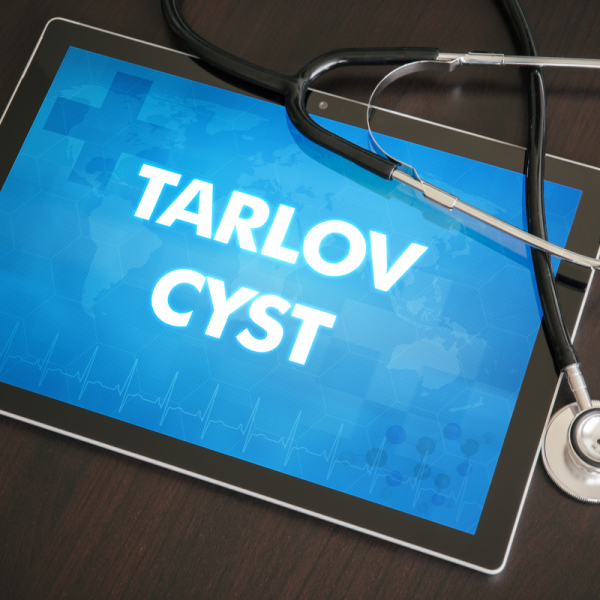
What is a Tarlov cyst?
A Tarlov cyst, also known as a perineural cyst, is a bulge in the nerve root of the spinal ganglia filled with cerebrospinal fluid. It is caused by a disturbed pressure relationship in the cerebrospinal fluid space, which can be caused, for example, by an inflammation of the arachnoid membrane (middle of the three meninges) and usually occurs in multiples. Women are more likely than average to develop a Tarlov cyst. However, it is a relatively rare disease.
How does a Tarlov cyst develop?
A Tarlov cyst is located at the exit from the spinal canal and develops exclusively on the posterior nerve roots. This is because only the cell bodies of the posterior nerve cells can form a bulge in the CSF space. Fluid can collect in these spaces due to excessive CSF pressure, which then swells to form cysts. The exact causes of a Tarlov cyst are still unknown. However, it is assumed that genetic factors could play a role. A Tarlov cyst therefore develops due to disturbed pressure conditions of the fluid system in the CSF space of the spinal canal.
What symptoms are caused by a Tarlov cyst?
The discoverer of the Tarlov cyst, the American pathologist Ed Tarlov, described the disease as asymptomatic. In contrast to Tarlov's description, however, the cyst can certainly cause complaints, such as severe back pain, if it has reached an appropriate size and exerts pressure on the neighbouring nerve roots. Typical here is pain in the lower spinal region. This can extend to the coccyx, the buttocks and the legs. However, a Tarlov cyst can also be the cause of various paraesthesias, which can greatly affect the daily life of the affected person. In addition, a Tarlov cyst can lead to weakness in the limbs, or to instability, tingling or disturbed temperature sensation. These symptoms should definitely be clarified by a doctor.
How is a Tarlov cyst diagnosed?
A Tarlov cyst can be detected by an MRI examination of the lumbar spine. However, if a Tarlov cyst is caused by arachnoiditis, the MRI may not always be able to make a definitive diagnosis.
How is a Tarlov cyst treated?
A Tarlov cyst can be treated with a variety of surgical procedures, each designed to relieve the patient's symptoms. This is done by reducing the cerebrospinal fluid circulation to a normal level. These procedures include cerebrospinal fluid drainage via the valve systems, micro-neurosurgical or endoscopic surgery, closure of the cystic fistulas, bony reconstruction of the sacrum or filling the cavities in the sacrum (Os sacrum) using fat grafting.
Frequencies Tarlov cyst
|
Pathogen |
Source |
Frequencies |
|
Leptomeningeal cyst (Tarlov) |
EDTFL |
Members get access to the frequencies immediately after registration. |
|
Tarlov cyst |
EDTFL |
Members get access to the frequencies immediately after registration. |
